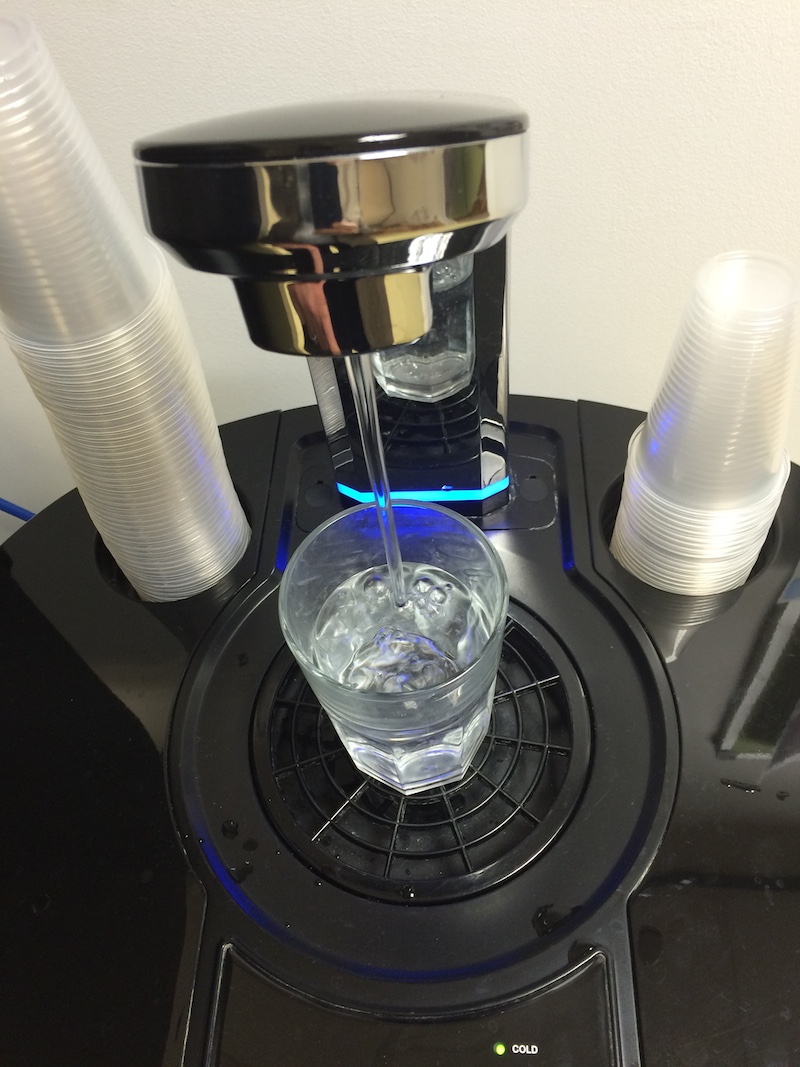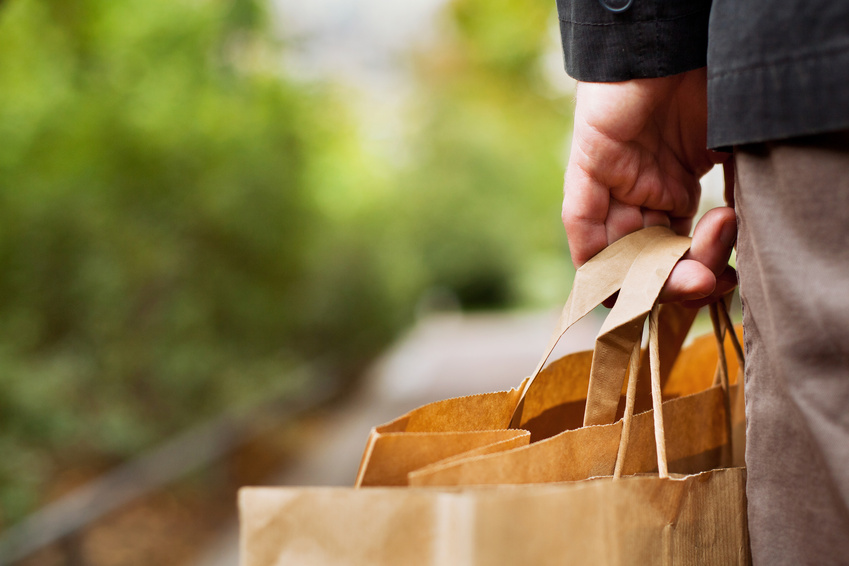Back in August, I made a post called Using Less Plastic. Well, I’m still using less plastic and I’m trying to use less and less all the time. This is part of the Use 10 Percent Less initiative which I find not only fun and kind to other people and the environment, but also cost effective.

Still Using Less Plastic – in the office
Looking at the picture above, you can see what the water fountain in my office is like. Notice the stacks of plastic cups piled up for people to use? For the first couple of months I was at this office I used those plastic cups. I’d only use one of them and, at the end of the day, I’d put that in the recycling bin so I felt pretty good about not wasting too much.
Plastic must be ok because it can be recycled, right?
Wrong!
The United States Environmental Protection Agency (EPA) says only 9 percent of overall plastic waste is recycled. Only 12% of plastic bags and sacks are recycled. They also say that 13% of municipal solid waste today is plastic, whereas in 1960 that was less than 1%. The bad news is that this plastic waste doesn’t degrade for an awfully long time. Every time we use a new piece of plastic we’re adding to the plastic burden we’re putting on the planet.
It might not sound like much when compared to the size of the planet, but every little bit does hurt and we’re certainly doing lots of little bits all over the world all the time.
Still Using Less Plastic – with a Glass
Just so that I can avoid this little bit of damage to the planet every day, I bought myself a glass to take to the office. Being a little worried about the safety of glass in the office, I bought a really chunky glass that’s highly unlikely to break even if I drop it.
You can see my glass on the water fountain above. Not only do I feel better because I’m doing a little bit to avoid some plastic going into the system, but it’s actually a nicer experience to drink from a glass as well.
One thing that I could have done even better would have been to buy a glass from a charity store or a second-hand store. No need to introduce new items into the world when perfectly good second-hand ones are available.
Still Using Less Plastic – reusable Shopping Bags
Another way to be still using less plastic is to avoid normal, “disposable” plastic shopping bags. It’s amazing how they are called disposable when they don’t degrade. You can’t get rid of them. You can only hide them (e.g. in landfills). The more we make, the more we crowd the Earth with this damaging stuff (also see Waste Deep).
I’m almost exclusively using reusable shopping bags now. They are still some sort of plastic, but I use them hundreds of times. That saves hundreds of those normal plastic shopping bags. It’s easy to do – all you have to do is remember to take the reusable shopping bags. I just keep them in the boot of the car so I can’t forget (even though occasionally I do).
Even better than reusable plastic shopping bags are reusable non-plastic shopping bags or no bags at all. I often find the cashier about to put a small purchase in plastic bag until I stop them and say I’ll put it in my briefcase, or just carry it. Why not? Every little bit helps.
I’m also pleased to see that some supermarkets have ditched plastic bags and moved back to paper bags. That’s great!

In a supermarket in England called Sainsbury’s they still offer standard plastic shopping bags, but they give you bonus rewards points on their store card for every reusable bag you bring along. At least that’s some encouragement.
I’ve started to keep statistics of how many times I use standard plastic bags, reusable bags or no bags and I intend to graph my results soon on the Use 10 Percent Less page.
Plastic Free July
I was put onto an initiative called Plastic Free July by Liane (see the comments at the bottom of Using Less Plastic), to whom I’m very grateful. I just love this type of initiative. Simple and free yet powerful and fun. Here’s what they say;
The challenge is quite simple…attempt to refuse single-use plastic during July.
Sounds simple? Maybe it’s not as simple as it looks. But is surely does sound like fun to try.
What do they mean by single-use plastics?
“Single-use” includes plastic shopping bags, plastic cups, straws, plastic packaging…basically anything that’s intended only to be used once and then discarded. If refusing ALL single-use plastic sounds too daunting this time, try the TOP 4 challenge (straws, plastic bags, plastic bottles & coffee cup lids).
They say that 14,000 people from 69 countries took part last year. I’m certainly going to give is a try this year, but I’m not sure if I can wait until July. I might give it a go before then.
Take a look at their website and see if you have the courage to join in. There’s nothing bad about it.
Still Using Less Plastic – Where to from here?
Keep an eye on plastic usage and help defend our planet from the abuse we’re inflicting. Following on from the Use 10 Percent Less initiative, we really don’t have to stop using plastics completely, we only have to try and reduce our usage and gradually keep reducing. Plastics are actually a very useful material and we can do many amazing things with them that have great benefits. But generating heaps of plastic things just to be used once and thrown into landfill is madness.
Reducing our plastic usage is fun. Be aware of plastics and find ways to cut them out. Help the planet and help the generations to follow. There’s nothing wrong with that.
Still Using Less Plastic – Related Links
- The US Environmental Protection Agency (EPA) on plastic – http://www.epa.gov/osw/conserve/materials/plastics.htm
- Plastic Free July – http://www.plasticfreejuly.org
- If your wondering where plastic waste can end up, take a look at this video – Waste Deep – you might be surprised.
In the global movement towards sustainability, the pledge to ‘Still Using Less Plastic’ resonates profoundly as individuals and communities recognize the environmental toll of excessive plastic consumption. Amidst this commitment, the relationship between our choices and the materials we use comes into focus, with glass emerging as a compelling alternative.
Thanks for your comments.
Limiting plastic waste is surely an important topic and recycling the plastic is a good step to eliminating waste. I find with almost everything that there are positive and negative points to be considered. The negative side of glass is that it takes quite a lot of energy to make, hence releasing greenhouse-gas emissions but, if we use that glass over and over, it has a positive effect overall. Plastics may not be so bad if they are truly recycled, but I fear that so little of the plastic in our society is truly recycled (does that plastic cup come back to you as a recycled plastic cup?). New plastic is just too cheap for people to bother.
If we could learn to waste less, that would be a great start. There aren’t any real downsides to wasting less.
All the best,
Peter.
commercial concrete lies in their shared commitment to sustainability. “Still Using Less Plastic” advocates for reducing plastic consumption to mitigate environmental damage, while the commercial concrete industry increasingly explores eco-friendly alternatives and practices to minimize its carbon footprint and ecological impact